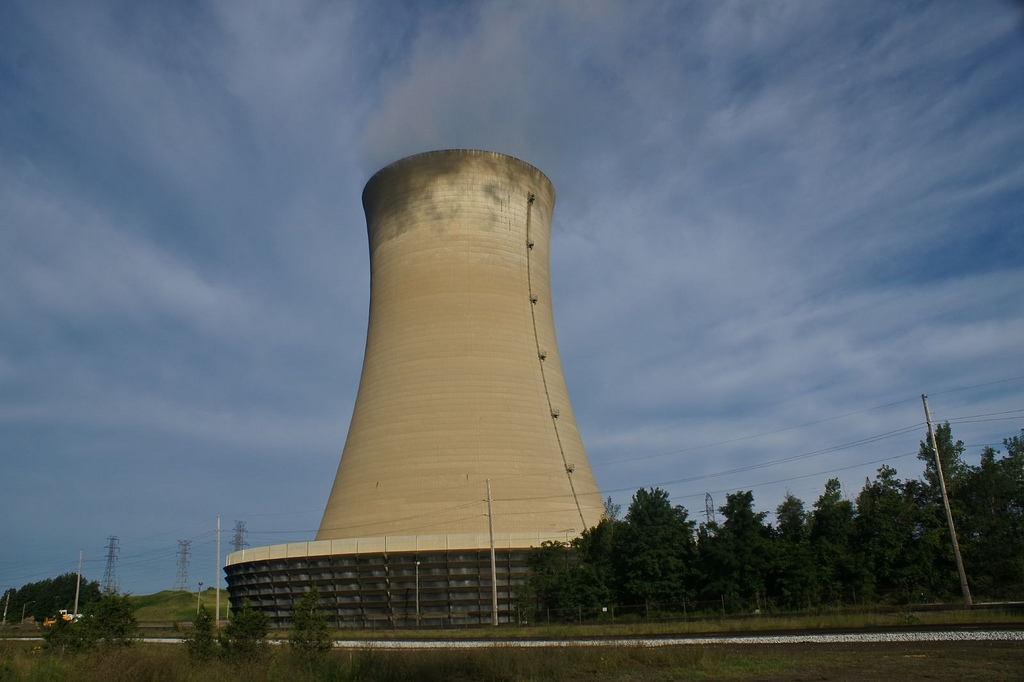The smallest U.S. state now faces a big question on energy policy.
Rhode Island is in the midst of deciding whether to continue getting a large portion of energy from fossil fuels, or to switch to renewable energy.
Those options are represented by two competing projects: a large natural-gas power plant, and an offshore wind farm.
DON'T MISS: Dirty money from polluters funds clean-car incentives in Rhode Island
Choosing the latter could make Rhode Island a leader in renewable energy, argues the Brookings Institution.
The stakes are so high because Rhode Island is an ideal case for large-scale renewable energy adoption, according to analysts.
It has no local sources of fossil fuel, but does have plenty of coastline that is perfect for wind turbines.

Cooling tower at power plant, by Flickr user Paul J Everett (Used under CC License)
That coastline also makes Rhode Island's citizens more aware of the effects of climate change, and many of those citizens are politically liberal (and also Catholic).
Taken together, all that means they are more likely to support renewable energy.
So far, the story of the two competing energy projects also looks promising for wind advocates.
ALSO SEE: Small Islands Are Biggest Beneficiaries Of Renewable Energy (May 2015)
The proposed natural-gas plant would be built in Burrillville, Rhode Island, in the northwest corner of the state.
This would place it near an existing pipeline that carries natural gas from Pennsylvania.
Chicago-based investor Invenergy said it would spend about $700 million on the plant, claiming it would produce 850 to 1,000 megawatts of electricity.

Block Island Southeast Lighthouse, by Flickr user MJM Photographie (Used under CC License)
The project initially won support from the state government for its job-creating possibilities.
But considerable local opposition to the plant has arisen, over concerns about its long-term environmental impact.
Among other things, area residents have expressed concern over the need to bring in hundreds of large trucks with fuel to fill massive backup-supply tanks.
MORE: Carbon emissions from U.S. power generation fall to 25-year low
It would also require the reopening of a well known to be contaminated with MTBE—a carcinogenic fuel additive.
While the natural-gas plant has created considerable strife, officials recently approved a wind farm off the coast of Block Island with relative ease.
Operated by Deepwater Wind, it consists of five turbines that can produce up to 30 megawatts of power.

Block Island North Lighthouse, by Flickr user MJM Photographie (Used under CC License)
That's not much compared to the 1,000-MW maximum of the natural-gas plant, but it could open the door for additional offshore wind-turbine construction in the U.S., the Brookings suggests.
The Deepwater Wind project is the first of its kind in the U.S., and thus provides a model for future projects, analysts note.
Thanks to helpful zoning work already done by the state, Rhode Island has the capacity for up to 5,000 MW of offshore wind generating capacity, said Deepwater Wind CEO Jeff Grybowski.
That's the equivalent of five natural-gas plants the size of the one proposed. Whether the state takes advantage of that work remains to be seen.
_______________________________________________












